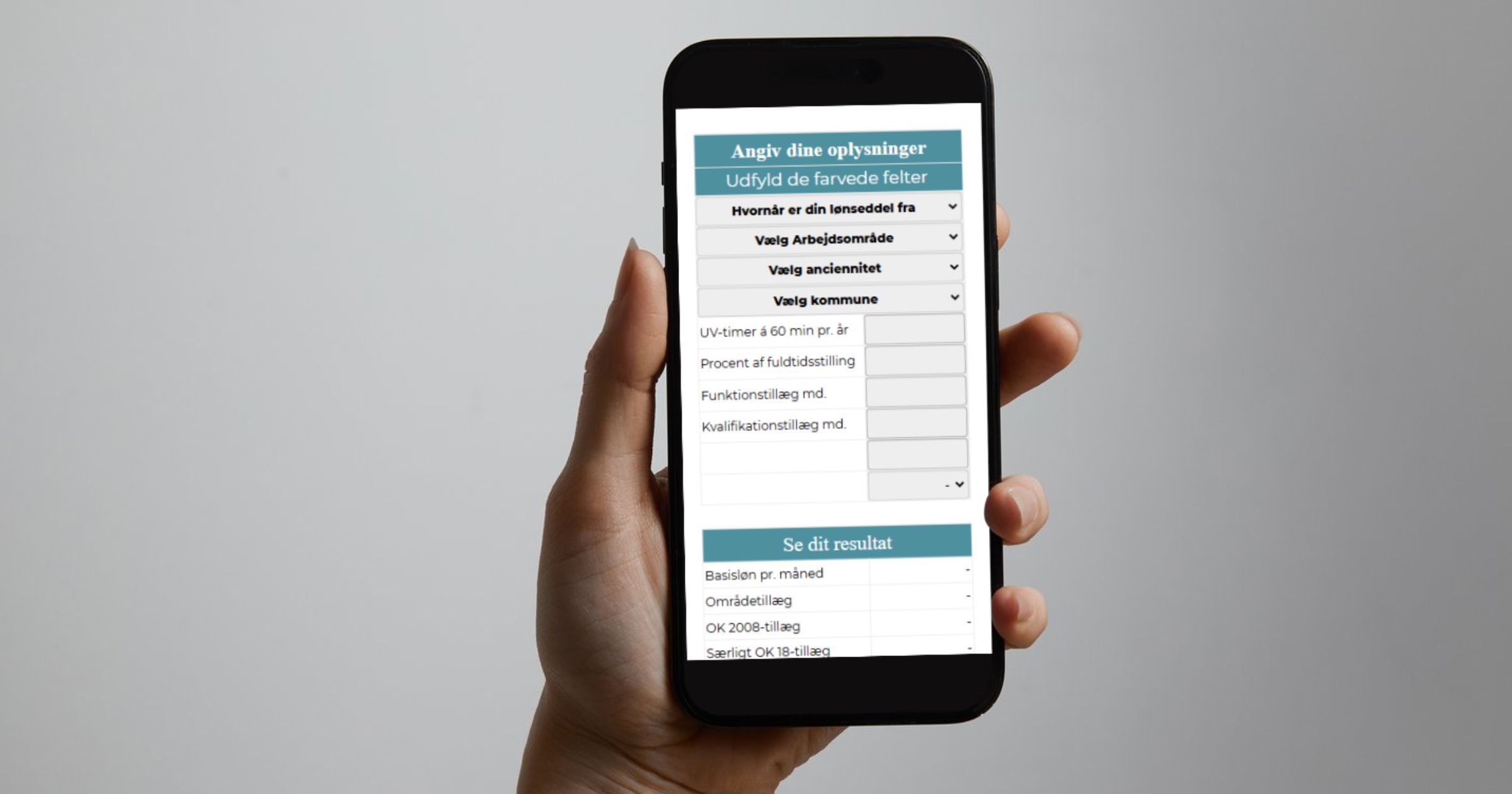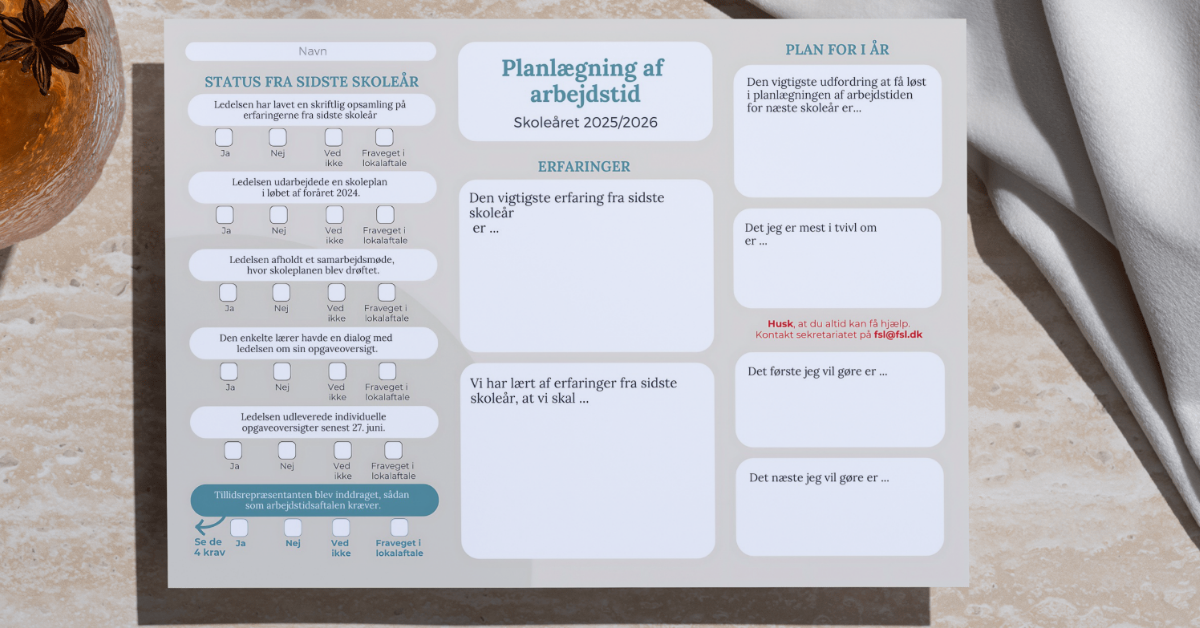AnsættelseArbejdsmiljøArbejdsskadeArbejdstidBarselFerieFraværKompetenceudviklingLønOverenskomstPensionRegelsamlingSeniorordningerTjeneste- og lejeboligOfte stillede spørgsmålNy lærer på en fri skoleOpgaverUddannelseValg og anmeldelseVilkårNyheder for tillidsrepræsentanterArrangementer for tillidsrepræsentanterOpgaverUddannelseValg og meddelelseVilkårNyheder om arbejdsmiljøArrangementer for arbejdsmiljørepræsentanterVilkårOpgaverValg af tillidsrepræsentantsuppleantKontante medlemsfordeleFaglige medlemsfordeleKontingentGruppelivsforsikringKrisehjælpA-kasseUdmelding
Log på
Få adgang til låst indhold, der er forbeholdt dig som medlem.
Gå til Mit FSL
Se dine medlemsoplysninger og skriv beskeder til tillidsvalgte.
Ofte søgt efter
Dine tidligere søgninger



